![]()
![]()
![]()
Use LEFT and RIGHT arrow keys to navigate between flashcards;
Use UP and DOWN arrow keys to flip the card;
H to show hint;
A reads text to speech;
315 Cards in this Set
- Front
- Back
- 3rd side (hint)
|
Toxic Part: Cannabis sativa
|
marijuana
|
flowering tops > flowers > leaves > stems. Female plants more toxic than males
|
|
|
Toxic Part: Calcium Oxalate plants Dieffenbachia spp.
|
Dumb cane
|
all parts are toxic, but especially stalk. Stalk > leaves
|
|
|
Toxic Part: Calcium Oxalate plants Philodendren spp.
|
split leaf philodendren
|
all parts are toxic, but especially stalk. Stalk > leaves
|
|
|
Toxic Part: Calcium Oxalate plants Caladium spp.
|
Caladium; Elephant ear
|
all parts are toxic, but especially stalk. Stalk > leaves
|
|
|
Toxic Part: Calcium Oxalate plants Arisaema spp
|
Jack in the pulpit
|
all parts are toxic, but especially stalk. Stalk > leaves
|
|
|
Toxic Part: Aloe vera
|
aloe
|
latex juice within the leaves
|
|
|
Toxic Part: Bulbs Tulipia spp.
|
tulip
|
bulb >>> other parts. Leaves contain some toxin, but much less of a hazard
|
|
|
Toxic Part: Bulbs Iris spp.
|
iris; flags
|
bulb >>> other parts. Leaves contain some toxin, but much less of a hazard
|
|
|
Toxic Part: Bulbs Narcissus spp.
|
daffodils
|
bulb >>> other parts. Leaves contain some toxin, but much less of a hazard
|
|
|
Toxic Part: Pinus spp
|
Christmas Tree
|
Pine needles, sap, water in tree reservoir probably more likely source
|
|
|
Toxic Part: Lilium longiflorum (Lilium spp.)
|
Easter lily and Asiatic lily, respectively
|
Leaves, stems, flowers – flowers most toxic
|
|
|
Toxic Part: Nicotiana tabacum
|
Tobacco
|
All parts – absorbed in small intestine; toxicity not lost in drying
|
|
|
Toxic Part: Phoradendron flavescens
|
Mistletoe
|
Leaves and berries – berries most toxic
|
|
|
Toxic Part: Poinsettia pulcherrima
|
Poinsettia
|
Leaves (juice/sap)
|
|
|
Toxic Part: Ilex opaca
|
American Holly
|
All parts
|
|
|
Toxic Part: Amanita muscaria
|
Fly mushroom, Amanita
|
Entire fungus
|
|
|
Toxic Part: Amanita spp.
|
Destroying Angel
|
Entire fungus
|
|
|
Toxic Part: Psilocybe
|
Sacred Mushroom (hallucinogens)
|
Entire fungus
|
|
|
Toxic Part: Paneolus
|
Sacred Mushroom
(hallucinogens) |
Entire fungus
|
|
|
Toxic Part: Digitalis purpurea
|
Foxglove, Digitalis
|
All parts of plant are toxic but with low palatability
|
|
|
Toxic Part: Nerium oleander
|
Oleander
|
All parts of plant are toxic but with low palatability
|
|
|
Toxic Part: Convallaria majalis
|
Lilly of the Valley
|
All parts of plant are toxic but with low palatability
|
|
|
Toxic Part: Sorghum halapense
|
Johnson Grass
|
85% of the nitrate is in the lower 1/3 of the plant (i.e. lower stalk); corn, wheat or oat seeds are not a problem; stover/straw problems. Silage and concentrate not source of nitrate. (bacteria degredate in silage)
|
|
|
Toxic Part: Sorghum spp.
|
Sorghum,Sudex
|
85% of the nitrate is in the lower 1/3 of the plant (i.e. lower stalk); corn, wheat or oat seeds are not a problem; stover/straw problems. Silage and concentrate not source of nitrate. (bacteria degredate in silage)
|
|
|
Toxic Part: Zea Mays
|
Corn
|
85% of the nitrate is in the lower 1/3 of the plant (i.e. lower stalk); corn, wheat or oat seeds are not a problem; stover/straw problems. Silage and concentrate not source of nitrate. (bacteria degredate in silage)
|
|
|
Toxic Part: Claviceps spp.
|
ergot
|
seed head
|
|
|
Toxic Part: Festuca
|
Tall Fescue
|
all parts toxic but seed heads most toxic (esp. in mid summer). Drought and fertilization increases toxicity
|
|
|
Toxic Part: Taxus spp.
|
Japanese Yew
|
All parts toxic except for fruit of the berries; toxic in green or dry stage; older more mature leaves more mature than young ones; concentration highest during winter.
|
|
|
Toxic Part: Aesculus octandra
|
Yellow Buckeye
|
NUTS are the most toxic, but all parts are potentially problematic.
|
|
|
Toxic Part: Acer rubrum
|
Red Maple
|
Wilted or dried leaves (fresh leaves suspected but not proven).
|
|
|
Toxic Part: Quercus spp
|
Oak, Acorn
|
Acorns, especially the caps. Oak buds also.
|
|
|
Toxic Part: Juglans nigra
|
Black Walnut
|
The wood is usually to blame (walnut shavings).
|
|
|
Toxic Part: Prunus spp
|
Wild or Chokecherry
|
Forage containing 200 ppm or greater is dangerous. Cyanide inhibits cytochrome oxidase and shuts down cellular respiration, leading to histotoxic anoxia. Nitrates are converted to nitrite, and nitrite converts hemoglobin to methemoglobin.
|
|
|
Toxic Part: Sorghum spp
|
Johnson or Sudan Grass
|
Forage containing 200 ppm or greater is dangerous. Cyanide inhibits cytochrome oxidase and shuts down cellular respiration, leading to histotoxic anoxia. Nitrates are converted to nitrite, and nitrite converts hemoglobin to methemoglobin.
|
|
|
Toxic Part: Sorghum spp
|
Sudex or Sorghum
|
Forage containing 200 ppm or greater is dangerous. Cyanide inhibits cytochrome oxidase and shuts down cellular respiration, leading to histotoxic anoxia. Nitrates are converted to nitrite, and nitrite converts hemoglobin to methemoglobin.
|
|
|
Toxic Part: Hypericum perforatum
|
St. Johnswort
|
Entire plant
|
|
|
Toxic Part: Fagopyrum sagittatum
|
Buckwheat
|
Entire plant
|
|
|
Toxic Part: Medicago sativa
|
Alfalfa
|
Entire plant
|
|
|
Toxic Part: Trifolium spp
|
White Clover
|
Entire plant
|
|
|
Toxic Part: Azalea spp.
|
Azalea
|
"0.2% of BW of leaves
nectar and honey made from nectar" |
|
|
Toxic Part: Kalmia latifolia
|
Mountain Laurel; Sheep Laurel
|
"0.2% of BW of leaves
nectar and honey made from nectar" |
|
|
Toxic Part: Rhododendron maximum
|
Rhododendron
|
"0.2% of BW of leaves
nectar and honey made from nectar" |
|
|
Toxic Part: Cicuta maculata
|
Water Hemlock
|
"lower stem and roots - highest concentration of the toxic yellow oily liquid
one piece of tuber the size of your thumb is enough to kill a horse or cow" |
|
|
Toxic Part: Toxicodendron radicans
|
Poison Ivy
|
N/A
|
|
|
Toxic Part: Toxicodendron quercifolium
|
Poison Oak
|
N/A
|
|
|
Toxic Part: Cannabis sativa
|
Marijuana
flowering tops > flowers > leaves > stems. Female plants more toxic than males |
|
|
|
Toxic Part: Calcium Oxalate plants Dieffenbachia spp.
|
Dumb cane
all parts are toxic, but especially stalk. Stalk > leaves |
|
|
|
Toxic Part: Calcium Oxalate plants Philodendren spp.
|
split leaf philodendren
all parts are toxic, but especially stalk. Stalk > leaves |
|
|
|
Toxic Part: Calcium Oxalate plants Caladium spp.
|
Caladium; Elephant ear
all parts are toxic, but especially stalk. Stalk > leaves |
|
|
|
Toxic Part: Calcium Oxalate plants Arisaema spp
|
Jack in the pulpit
all parts are toxic, but especially stalk. Stalk > leaves |
|
|
|
Toxic Part: Aloe vera
|
aloe
latex juice within the leaves |
|
|
|
Toxic Part: Bulbs Tulipia spp.
|
tulip
bulb >>> other parts. Leaves contain some toxin, but much less of a hazard |
|
|
|
Toxic Part: Bulbs Iris spp.
|
iris; flags
bulb >>> other parts. Leaves contain some toxin, but much less of a hazard |
|
|
|
Toxic Part: Bulbs Narcissus spp.
|
daffodils
bulb >>> other parts. Leaves contain some toxin, but much less of a hazard |
|
|
|
Toxic Part: Pinus spp
|
Christmas Tree
Pine needles, sap, water in tree reservoir probably more likely source |
|
|
|
Toxic Part: Lilium longiflorum (Lilium spp.)
|
Easter lily and Asiatic lily, respectively
Leaves, stems, flowers – flowers most toxic |
|
|
|
Toxic Part: Nicotiana tabacum
|
Tobacco
All parts – absorbed in small intestine; toxicity not lost in drying |
|
|
|
Toxic Part: Phoradendron flavescens
|
Mistletoe
Leaves and berries – berries most toxic |
|
|
|
Toxic Part: Poinsettia pulcherrima
|
Poinsettia
Leaves (juice/sap) |
|
|
|
Toxic Part: Ilex opaca
|
American Holly
All parts |
|
|
|
Toxic Part: Amanita muscaria
|
Fly mushroom, Amanita
Entire fungus |
|
|
|
Toxic Part: Amanita spp.
|
Destroying Angel
Entire fungus |
|
|
|
Toxic Part: Psilocybe
|
Sacred Mushroom (hallucinogens)
Entire fungus |
|
|
|
Toxic Part: Paneolus
|
Sacred Mushroom
(hallucinogens) Entire fungus |
|
|
|
Toxic Part: Digitalis purpurea
|
Foxglove, Digitalis
All parts of plant are toxic but with low palatability |
|
|
|
Toxic Part: Nerium oleander
|
Oleander
All parts of plant are toxic but with low palatability |
|
|
|
Toxic Part: Convallaria majalis
|
Lilly of the Valley
All parts of plant are toxic but with low palatability |
|
|
|
Toxic Part: Sorghum halapense
|
Johnson Grass
85% of the nitrate is in the lower 1/3 of the plant (i.e. lower stalk); corn, wheat or oat seeds are not a problem; stover/straw problems. Silage and concentrate not source of nitrate. (bacteria degredate in silage) |
|
|
|
Toxic Part: Sorghum spp.
|
Sorghum,Sudex
85% of the nitrate is in the lower 1/3 of the plant (i.e. lower stalk); corn, wheat or oat seeds are not a problem; stover/straw problems. Silage and concentrate not source of nitrate. (bacteria degredate in silage) |
|
|
|
Toxic Part: Zea Mays
|
Corn
85% of the nitrate is in the lower 1/3 of the plant (i.e. lower stalk); corn, wheat or oat seeds are not a problem; stover/straw problems. Silage and concentrate not source of nitrate. (bacteria degredate in silage) |
|
|
|
Toxic Part: Claviceps spp.
|
ergot
seed head |
|
|
|
Toxic Part: Festuca
|
Tall Fescue
all parts toxic but seed heads most toxic (esp. in mid summer). Drought and fertilization increases toxicity |
|
|
|
Toxic Part: Taxus spp.
|
Japanese Yew
All parts toxic except for fruit of the berries; toxic in green or dry stage; older more mature leaves more mature than young ones; concentration highest during winter. |
|
|
|
Toxic Part: Aesculus octandra
|
Yellow Buckeye
NUTS are the most toxic, but all parts are potentially problematic. |
|
|
|
Toxic Part: Acer rubrum
|
Red Maple
Wilted or dried leaves (fresh leaves suspected but not proven). |
|
|
|
Toxic Part: Quercus spp
|
Oak, Acorn
Acorns, especially the caps. Oak buds also. |
|
|
|
Toxic Part: Juglans nigra
|
Black Walnut
The wood is usually to blame (walnut shavings). |
|
|
|
Toxic Part: Prunus spp
|
Wild or Chokecherry
Forage containing 200 ppm or greater is dangerous. Cyanide inhibits cytochrome oxidase and shuts down cellular respiration, leading to histotoxic anoxia. Nitrates are converted to nitrite, and nitrite converts hemoglobin to methemoglobin. |
|
|
|
Toxic Part: Sorghum spp
|
Johnson or Sudan Grass
Forage containing 200 ppm or greater is dangerous. Cyanide inhibits cytochrome oxidase and shuts down cellular respiration, leading to histotoxic anoxia. Nitrates are converted to nitrite, and nitrite converts hemoglobin to methemoglobin. |
|
|
|
Toxic Part: Sorghum spp
|
Sudex or Sorghum
Forage containing 200 ppm or greater is dangerous. Cyanide inhibits cytochrome oxidase and shuts down cellular respiration, leading to histotoxic anoxia. Nitrates are converted to nitrite, and nitrite converts hemoglobin to methemoglobin. |
|
|
|
Toxic Part: Hypericum perforatum
|
St. Johnswort
Entire plant |
|
|
|
Toxic Part: Fagopyrum sagittatum
|
Buckwheat
Entire plant |
|
|
|
Toxic Part: Medicago sativa
|
Alfalfa
Entire plant |
|
|
|
Toxic Part: Trifolium spp
|
White Clover
Entire plant |
|
|
|
Toxic Part: Azalea spp.
|
Azalea
"0.2% of BW of leaves nectar and honey made from nectar" |
|
|
|
Toxic Part: Kalmia latifolia
|
Mountain Laurel; Sheep Laurel
"0.2% of BW of leaves nectar and honey made from nectar" |
|
|
|
Toxic Part: Rhododendron maximum
|
Rhododendron
"0.2% of BW of leaves nectar and honey made from nectar" |
|
|
|
Toxic Part: Cicuta maculata
|
Water Hemlock
"lower stem and roots - highest concentration of the toxic yellow oily liquid one piece of tuber the size of your thumb is enough to kill a horse or cow" |
|
|
|
Toxic Part: Toxicodendron radicans
|
Poison Ivy
N/A |
|
|
|
Toxic Part: Toxicodendron quercifolium
|
Poison Oak
N/A |
|
|
|
Toxic Principle: Cannabis sativa
|
tetrahydrocannabinol (THC). Mechanism unknown but THC affects brain serotonin, norepinephrine and dopamine metabolism
|
|
|
|
Toxic Principle: Calcium Oxalate plants Dieffenbachia spp.
|
insoluble Ca oxalate crystals embed on GI tract causing irritation. Needles shoot out of idioblast. Also, proteolytic enzymes may cause histamine release.
|
|
|
|
Toxic Principle: Calcium Oxalate plants Philodendren spp.
|
insoluble Ca oxalate crystals embed on GI tract causing irritation. Needles shoot out of idioblast. Also, proteolytic enzymes may cause histamine release.
|
|
|
|
Toxic Principle: Calcium Oxalate plants Caladium spp.
|
insoluble Ca oxalate crystals embed on GI tract causing irritation. Needles shoot out of idioblast. Also, proteolytic enzymes may cause histamine release.
|
|
|
|
Toxic Principle: Calcium Oxalate plants Arisaema spp
|
insoluble Ca oxalate crystals embed on GI tract causing irritation. Needles shoot out of idioblast. Also, proteolytic enzymes may cause histamine release.
|
|
|
|
Toxic Principle: Aloe vera
|
barbolin (an anthraquinone glycoside) is a purgative
|
|
|
|
Toxic Principle: Bulbs Tulipia spp.
|
exact mechanism unknown, bulb contains a combination of irritant resins and alkaloids
|
|
|
|
Toxic Principle: Bulbs Iris spp.
|
exact mechanism unknown, bulb contains a combination of irritant resins and alkaloids
|
|
|
|
Toxic Principle: Bulbs Narcissus spp.
|
exact mechanism unknown, bulb contains a combination of irritant resins and alkaloids
|
|
|
|
Toxic Principle: Pinus spp
|
"Multiple monocyclic carbon alcohols in pine needles and the sap
that leeches into the water reservoir; pinene, pine oil, phenol-type compounds" |
|
|
|
Toxic Principle: Lilium longiflorum (Lilium spp.)
|
Unknown
|
|
|
|
Toxic Principle: Nicotiana tabacum
|
"–Pyridine alkaloid: nicotine
–Teratogen is called Anabasine (Large Animals)" |
|
|
|
Toxic Principle: Phoradendron flavescens
|
"–Sympathomimetic amines like tyramine, choline and B-
phenylethylamine –Oxytocin like substance - increase BP & RR »Abortifacient used by American Indians –Phoratoxin (a Toxalbumin) - GI irritant »Similar to Castor Bean »Biggest problem with ingestion of berries" |
|
|
|
Toxic Principle: Poinsettia pulcherrima
|
Euphorbin, an irritant in the juice or sap
|
|
|
|
Toxic Principle: Ilex opaca
|
"–Glucosidic saponins most important
–Also has some caffeine & theobromine –All parts of plant are toxic" |
|
|
|
Toxic Principle: Amanita muscaria
|
"1. Muscarinic: Inocybe & Clitocybe
muscarine similar to ACh & binds to ACh receptors → causes unclrolled stimulation → not degraded by Achesterase 2. Isoxazole: Ibotenic & Muscimol *crosses BBB & acts on CNS *Muscimol: potent agonist of GABA receptor so decreases motor activity at small dose & ataxia at large dose *Ibotenic Acid: mimics glutamic acid activity in CNS" |
|
|
|
Toxic Principle: Amanita spp.
|
"*Cyclopeptides: amanitins (most important because toxic orally) & phalloidins
*Amanitins inhibit nuclear RNA polymerase II → block protein synthesis at ribosomes → cell death of hepatocytes, renal tubular cells & crypt cells" |
|
|
|
Toxic Principle: Psilocybe
|
"Psilocybin metabolized to Psilocin (active)
*Indole tryptamine derivative (serotonin) *Stimulates serotonin receptors *psychoactive effects similar to LSD" |
|
|
|
Toxic Principle: Paneolus
|
"Psilocybin metabolized to Psilocin (active)
*Indole tryptamine derivative (serotonin) *Stimulates serotonin receptors *psychoactive effects similar to LSD" |
|
|
|
Toxic Principle: Digitalis purpurea
|
"Fairly potent toxicant
*Cardiac glycosides which are digitalis, digitoxin, convallamarin, & oleandrin *cause cardiac arrhythmias due to incomplete AV block" |
|
|
|
Toxic Principle: Nerium oleander
|
same as Digitalis purpurea; only takes 0.005% BW to be lethal
"Fairly potent toxicant *Cardiac glycosides which are digitalis, digitoxin, convallamarin, & oleandrin *cause cardiac arrhythmias due to incomplete AV block" |
|
|
|
Toxic Principle: Convallaria majalis
|
"Fairly potent toxicant
*Cardiac glycosides which are digitalis, digitoxin, convallamarin, & oleandrin *cause cardiac arrhythmias due to incomplete AV block" |
|
|
|
Toxic Principle: Sorghum halapense
|
Nitrates reduced to nitrite by rumen microbes -> nitrate is an oxidizing agent that causes methhemobglobin in amt greater than what can be compensated for by methemoglobin reductase. Chronic nitrate toxicosis thought to be associated with induced iodine deficiency or decreased progesterone production by copora lutea.
|
|
|
|
Toxic Principle: Sorghum spp.
|
Nitrates reduced to nitrite by rumen microbes -> nitrate is an oxidizing agent that causes methhemobglobin in amt greater than what can be compensated for by methemoglobin reductase. Chronic nitrate toxicosis thought to be associated with induced iodine deficiency or decreased progesterone production by copora lutea.
|
|
|
|
Toxic Principle: Zea Mays
|
Nitrates reduced to nitrite by rumen microbes -> nitrate is an oxidizing agent that causes methhemobglobin in amt greater than what can be compensated for by methemoglobin reductase. Chronic nitrate toxicosis thought to be associated with induced iodine deficiency or decreased progesterone production by copora lutea.
|
|
|
|
Toxic Principle: Claviceps spp.
|
Claviceps purpurea has ergocryptine, ergocornine, ergocristine, ergotamine, ergosine and ergonovine which do the following:
1.lysergic acid has CNS effects and causes vasoconstriction 2. decreases prolactin 3. interferes with thermoregulation center of hypothamalamus. Claviceps paspali produces paspalitrems which are tremorgenic and have physioloigic effects related to CNS. |
|
|
|
Toxic Principle: Festuca
|
Neotyphodium coenophialum endophytic fungus grows on >95% of fescue grass in Southwest and Midwest-->contains alkaloids. Alkaloid ergovaline affects smooth muscle contraction, hypothalamic thermoregulation, prolactin levels, and other midbrain sympathetic activity. It is a dopamine (D2) agonist and serotonin antagonist.
|
|
|
|
Toxic Principle: Taxus spp.
|
19 alkaloids found but most important are taxine A and B → depress conduction of depolarization through the heart; leads to pronounced bradycardia with heart stoppage in diastole; also negative ionotrope and calcium, sodium channel antagonistic activity.
|
|
|
|
Toxic Principle: Aesculus octandra
|
Consumption of only 0.5-1% of body weight can be fatal. The suspected toxins are triterpenoid saponins, which can be neurotoxic at low doses and hemolytic at high doses. All species are susceptible, but most of cases are seen in cattle.
|
|
|
|
Toxic Principle: Acer rubrum
|
Gallic acid and pyrogallol involved. Lead to oxidative damage to red cells, forming methmeglobin with a lack of oxygen carrying capacity. Mostly a problem in horses.
|
|
|
|
Toxic Principle: Quercus spp
|
Tannins and their metabolites. Tannins metabolized to gallic acid and pyrogallol. Gallic acid precipitates proteins. Presumed mechanism is through endothelial damage leading to interstitial and perirenal edema.
|
|
|
|
Toxic Principle: Juglans nigra
|
Moldy walnuts contain Penitrum A, which is toxic to dogs. Fresh walnuts are toxic mostly to horses through an unknown mechanism.
|
|
|
|
Toxic Principle: Prunus spp
|
Forage containing 200 ppm or greater is dangerous. Cyanide inhibits cytochrome oxidase and shuts down cellular respiration, leading to histotoxic anoxia. Nitrates are converted to nitrite, and nitrite converts hemoglobin to methemoglobin.
|
|
|
|
Toxic Principle: Sorghum spp
|
Forage containing 200 ppm or greater is dangerous. Cyanide inhibits cytochrome oxidase and shuts down cellular respiration, leading to histotoxic anoxia. Nitrates are converted to nitrite, and nitrite converts hemoglobin to methemoglobin.
|
|
|
|
Toxic Principle: Sorghum spp
|
Forage containing 200 ppm or greater is dangerous. Cyanide inhibits cytochrome oxidase and shuts down cellular respiration, leading to histotoxic anoxia. Nitrates are converted to nitrite, and nitrite converts hemoglobin to methemoglobin.
|
|
|
|
Toxic Principle: Hypericum perforatum
|
Primary photosensitivity: pigments in plants present, need no metabolism. Causes photosensitizational dermatitis, caused by activation of photodynamic agent by UV light. Pigments are hypericin (St. Johnswort)& fagopyrin (Buckwheat). Pigments form free radicals that interact with DNA, RNA in skin cells. This changes membrane permeability, leading to cell death.
|
|
|
|
Toxic Principle: Fagopyrum sagittatum
|
Primary photosensitivity: pigments in plants present, need no metabolism. Causes photosensitizational dermatitis, caused by activation of photodynamic agent by UV light. Pigments are hypericin (St. Johnswort)& fagopyrin (Buckwheat). Pigments form free radicals that interact with DNA, RNA in skin cells. This changes membrane permeability, leading to cell death.
|
|
|
|
Toxic Principle: Medicago sativa
|
Toxin unknown, mechanism thought to be like that below.
Primary photosensitivity: pigments in plants present, need no metabolism. Causes photosensitizational dermatitis, caused by activation of photodynamic agent by UV light. Pigments are hypericin (St. Johnswort)& fagopyrin (Buckwheat). Pigments form free radicals that interact with DNA, RNA in skin cells. This changes membrane permeability, leading to cell death. |
|
|
|
Toxic Principle: Trifolium spp
|
Toxin unknown, mechanism thought to be like that below.
Primary photosensitivity: pigments in plants present, need no metabolism. Causes photosensitizational dermatitis, caused by activation of photodynamic agent by UV light. Pigments are hypericin (St. Johnswort)& fagopyrin (Buckwheat). Pigments form free radicals that interact with DNA, RNA in skin cells. This changes membrane permeability, leading to cell death. |
|
|
|
Toxic Principle: Azalea spp.
|
"Grayanotoxins (Andromedotoxins-tetracyclic polyol (complex alcohol)
Arbutin - a glycoside; a toxicant of secondary importance" |
|
|
|
Toxic Principle: Kalmia latifolia
|
"Grayanotoxins (Andromedotoxins-tetracyclic polyol (complex alcohol)
Arbutin - a glycoside; a toxicant of secondary importance" |
|
|
|
Toxic Principle: Rhododendron maximum
|
"Grayanotoxins (Andromedotoxins-tetracyclic polyol (complex alcohol)
Arbutin - a glycoside; a toxicant of secondary importance" |
|
|
|
Toxic Principle: Cicuta maculata
|
"Cicutoxin: a resenoid
complex alcohol-unsaturated present in the yellow oily liquid Cicutol - an alcohol derivative, which is relatively non-toxic" |
|
|
|
Toxic Principle: Toxicodendron radicans
|
oil in the root, stem, leaf, flower, and fruit can cause dermatitis in people --- IT DOES NOT AFFECT ANIMALS but they can carry the oil on their coats, transferring it to humans
|
|
|
|
Toxic Principle: Toxicodendron quercifolium
|
" --- IT DOES NOT USUALLY AFFECT ANIMALS (some dogs may get slight irritation on underbelly or nose)
- people can have an allergic reaction to this plant -livestock can graze without side effects " |
|
|

What is this plant?
|
Cannabis sativa
|
|
|

What is this plant?
|
Marijuana
|
|
|
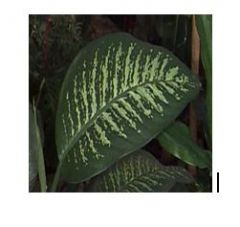
What is this plant?
|
Calcium Oxalate plants Dieffenbachia spp.
|
|
|

What is this plant?
|
Dumb Cane
|
|
|

What is this plant?
|
Calcium Oxalate plants Philodendren spp.
|
|
|

What is this plant?
|
Split Leaf Philodendren
|
|
|

What is this plant?
|
Calcium Oxalate plants Caladium spp.
|
|
|

What is this plant?
|
Caladium - Elephant Ear
|
|
|

What is this plant?
|
Calcium Oxalate plants Arisaema spp
|
|
|

What is this plant?
|
Jack in the Pulpit
|
|
|

What is this plant?
|
Aloe vera
|
|
|

What is this plant?
|
Aloe
|
|
|

What is this plant?
|
Bulbs Tulipia spp.
|
|
|

What is this plant?
|
Tulip
|
|
|

What is this plant?
|
Bulbs Iris spp.
|
|
|

What is this plant?
|
Iris; Flags
|
|
|

What is this plant?
|
Daffodils
|
|
|

What is this plant?
|
Bulbs Narcissus spp.
|
|
|

What is this plant?
|
Pinus spp
|
|
|

What is this plant?
|
Christmas Tree
|
|
|
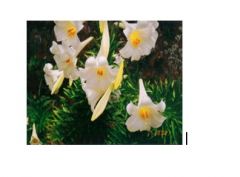
What is this plant?
|
Lilium longiflorum (Lilium spp.)
|
|
|

What is this plant?
|
Easter lily and Asiatic lily respectively
|
|
|

What is this plant?
|
Nicotiana tabacum
|
|
|

What is this plant?
|
Tobacco
|
|
|

What is this plant?
|
Mistletoe
|
|
|

What is this plant?
|
Phoradendron flavescens
|
|
|
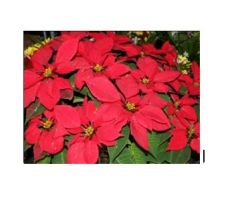
What is this plant?
|
Poinsettia pulcherrima
|
|
|

What is this plant?
|
Poinsettia
|
|
|
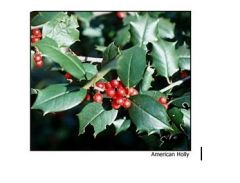
What is this plant?
|
Ilex opaca
|
|
|

What is this plant?
|
American Holly
|
|
|

What is this plant?
|
Amanita muscaria
|
|
|

What is this plant?
|
Fly Mushroom, Amanita
|
|
|
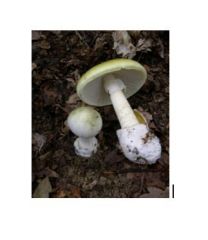
What is this plant?
|
Amanita spp. (Destroying Angel)
|
|
|

What is this plant?
|
Destroying Angel
|
|
|

What is this plant?
|
Psilocybe
|
|
|
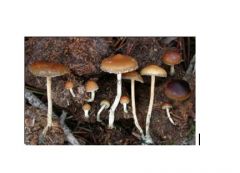
What is this plant?
|
Sacred Mushroom (hallucinogen)
|
|
|

What is this plant?
|
Paneolus
|
|
|

What is this plant?
|
Sacred Mushroom (hallucinogen)
|
|
|

What is this plant?
|
Digitalis purpurea
|
|
|
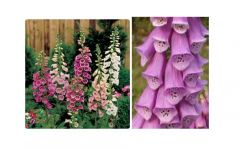
What is this plant?
|
Foxglove, Digitalis
|
|
|

What is this plant?
|
Nerium oleander
|
|
|
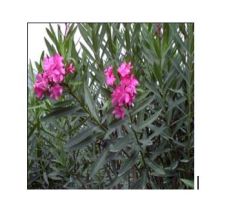
What is this plant?
|
Oleander
|
|
|

What is this plant?
|
Convallaria majalis
|
|
|

What is this plant?
|
Lily of the Valley
|
|
|
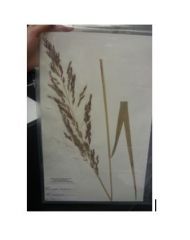
What is this plant?
|
Sorghum halapense (Johnson Grass)
|
|
|

What is this plant?
|
Johnson Grass
|
|
|

What is this plant?
|
Sorghum spp. (Sorghum, Sudex)
|
|
|

What is this plant?
|
Sorghum; Sudex
|
|
|

What is this plant?
|
Zea Mays
|
|
|

What is this plant?
|
Corn
|
|
|

What is this plant?
|
Claviceps spp.
|
|
|

What is this plant?
|
Ergot
|
|
|

What is this plant?
|
Festuca
|
|
|

What is this plant?
|
Tall Fescue
|
|
|

What is this plant?
|
Taxus spp.
|
|
|

What is this plant?
|
Japanese Yew
|
|
|

What is this plant?
|
Aesculus octandra
|
|
|

What is this plant?
|
Yellow Buckeye
|
|
|

What is this plant?
|
Acer rubrum
|
|
|

What is this plant?
|
Red Maple
|
|
|

What is this plant?
|
Quercus spp
|
|
|

What is this plant?
|
Oak, Acorn
|
|
|

What is this plant?
|
Juglans nigra
|
|
|

What is this plant?
|
Black Walnut
|
|
|

What is this plant?
|
Prunus spp
|
|
|

What is this plant?
|
Wild or Choke Cherry
|
|
|
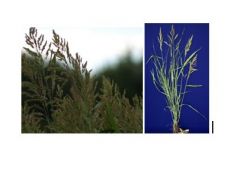
What is this plant?
|
Sorghum spp (Johnson or Sudan Grass)
|
|
|

What is this plant?
|
Johnson or Sudan Grass
|
|
|
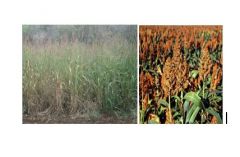
What is this plant?
|
Sorghum spp (Sudex or Sorghum)
|
|
|
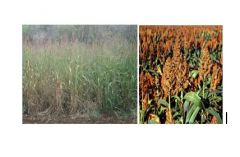
What is this plant?
|
Sudex or Sorghum
|
|
|

What is this plant?
|
Hypericum perforatum
|
|
|

What is this plant?
|
St. Johnswort
|
|
|
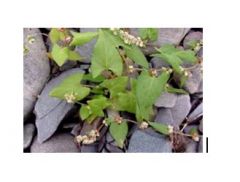
What is this plant?
|
Fagopyrum sagittatum
|
|
|

What is this plant?
|
Buckwheat
|
|
|

What is this plant?
|
Medicago sativa
|
|
|
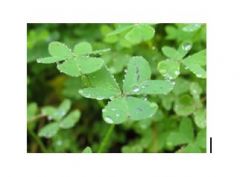
What is this plant?
|
Alfalfa
|
|
|

What is this plant?
|
Trifolium spp
|
|
|
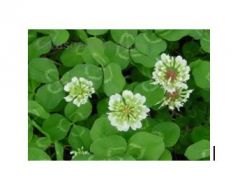
What is this plant?
|
White Clover
|
|
|

What is this plant?
|
Azalea spp.
|
|
|

What is this plant?
|
Azalea
|
|
|

What is this plant?
|
Kalmia latifolia
|
|
|

What is this plant?
|
Mountain Laurel; Sheep Laurel
|
|
|

What is this plant?
|
Rhododendron maximum
|
|
|

What is this plant?
|
Rhododendron
|
|
|

What is this plant?
|
Cicuta maculata
|
|
|

What is this plant?
|
Water Hemlock
|
|
|

What is this plant?
|
Toxicodendron radicans
|
|
|

What is this plant?
|
Poison Ivy
|
|
|

What is this plant?
|
Toxicodendron quercifolium
|
|
|

What is this plant?
|
Poison Oak
|
|
|
|
Clinical Signs: Cannabis sativa
|
CNS (depress>>hyperesthesia) - esp. glazed eyes & stupor. Ataxia, vomit, bradycardia, tremors.
|
marijuana
|
|
|
Clinical Signs: Calcium Oxalate plants Dieffenbachia spp.
|
GI signs - vomit, diarrhea, salivation. Head shaking, loss of voice.
|
Dumb cane
|
|
|
Clinical Signs: Calcium Oxalate plants Philodendren spp.
|
GI signs - vomit, diarrhea, salivation. Head shaking, loss of voice.
|
split leaf philodendren
|
|
|
Clinical Signs: Calcium Oxalate plants Caladium spp.
|
GI signs - vomit, diarrhea, salivation. Head shaking, loss of voice.
|
Caladium; Elephant ear
|
|
|
Clinical Signs: Calcium Oxalate plants Arisaema spp
|
GI signs - vomit, diarrhea, salivation. Head shaking, loss of voice.
|
Jack in the pulpit
|
|
|
Clinical Signs: Aloe vera
|
GI signs- vomiting and diarrhea; possible red color urine if the urine is alkaline (kidney irritation).
|
aloe
|
|
|
Clinical Signs: Bulbs Tulipia spp.
|
GI signs- vomiting, diarrhea, salivation.
|
tulip
|
|
|
Clinical Signs: Bulbs Iris spp.
|
GI signs- vomiting, diarrhea, salivation.
|
iris; flags
|
|
|
Clinical Signs: Bulbs Narcissus spp.
|
GI signs- vomiting, diarrhea, salivation.
|
daffodils
|
|
|
Clinical Signs: Pinus spp
|
Clinical Signs: CNS, Liver, GI, Renal
Onset time: <12 hours Depression/lethargy, jaundice, vomiting and diarrhea, abdominal Pain, possible seizures |
Christmas Tree
|
|
|
Clinical Signs: Lilium longiflorum (Lilium spp.)
|
Clinical Signs: GI, Renal
Onset time: <12 hours; GI <2 hrs, Renal 1-3 days, course is 3-7 days Vomiting, anorexia, polyuria early (12-24hrs), dehydration, salivation, Depression/lethargy, oliguria/anuria late (>24hrs), hypothermia |
Easter lily and Asiatic lily, respectively
|
|
|
Clinical Signs: Nicotiana tabacum
|
Clinical Signs: CNS, Cardiovascular
Onset time: 15-60min -CNS: Excitation, hyperactivity, shaking, shivering, twitching, staggering gait –Nausea, vomiting, diarrhea, urination, lacrimation –CV: decreased HR early then increasing with blockade, weak thready pulse with low BP –High dose: weakness, staggering, collapse »Resp. changes from rapid and shallow to very slow; death |
Tobacco
|
|
|
Clinical Signs: Phoradendron flavescens
|
Clinical Signs: System: GI
–Onset time is about 12-24 hrs post ingestion –Vomiting, diarrhea, abdominal pain (colic) –Pale, anorexic, apathetic, PU and bradycardia –Fluid and electrolyte imbalance |
Mistletoe
|
|
|
Clinical Signs: Poinsettia pulcherrima
|
Clinical Signs: System: GI
–Irritated oral mucosa in puppies, kittens, birds, lizards –Emesis, nausea, diarrhea –Conjunctivitis, keratitis, possible dermatitis |
Poinsettia
|
|
|
Clinical Signs: Ilex opaca
|
Clinical Signs: GI
–Salivation, vomiting, diarrhea - self limiting –May become anorexic –Shake head, smack lips (burning irritation) |
American Holly
|
|
|
Clinical Signs: Amanita muscaria
|
1. Muscarinic-fast onset; GI & Autonomic NS (SLUD, abdomenal pain due to severe intestinal contractions, miosis & bradycardia
2. Isoxazole-CNS signs; Canine gets opisthotonus, paresis, seizures, paddling, chewing, miosis, vestibular signs, respiratory depression, coma |
Fly mushroom, Amanita
|
|
|
Clinical Signs: Amanita spp.
|
*latent period of 6-12 hours post-ingestion
*Initial Signs:nausea, vomiting, diarrhea, abdominal cramps, feeble rapid pulse *Later Signs: severe signs of liver & kidney failure; severe hypoglycemia; significant elevation of liver enzymes; Renal Failure signs of PU/PD, vomiting, anorexia, tubular necrosis, Increased BUN, CREA |
Destroying Angel
|
|
|
Clinical Signs: Psilocybe
|
CNS signs-ataxia, vocalization, overt aggression, nystagmus, increased HR, BP, & temperature; mydriasis, tremors; no coma
|
Sacred Mushroom (hallucinogens)
|
|
|
Clinical Signs: Paneolus
|
CNS signs-ataxia, vocalization, overt aggression, nystagmus, increased HR, BP, & temperature; mydriasis, tremors; no coma
|
Sacred Mushroom
(hallucinogens) |
|
|
Clinical Signs: Digitalis purpurea
|
Clinical Signs: Onset time: rapid, usually 30-60 minutes post-ingestion
*Gastrointestinal: usually are initially the predominate signs including salivation, nausea, vomiting. Abdominal pain, diarrhea; may see mild hyperemia of gut *Cardiovascular: later signs including strong, slow pulse → weak rapid pulse & beat as AV, progressive heart block, cardiac arrhythmias, ataxia, hypotension, shock, collapse, death *Other signs: increased frequency of urination |
Foxglove, Digitalis
|
|
|
Clinical Signs: Nerium oleander
|
same as Digitalis pupurea
Clinical Signs: Onset time: rapid, usually 30-60 minutes post-ingestion *Gastrointestinal: usually are initially the predominate signs including salivation, nausea, vomiting. Abdominal pain, diarrhea; may see mild hyperemia of gut *Cardiovascular: later signs including strong, slow pulse → weak rapid pulse & beat as AV, progressive heart block, cardiac arrhythmias, ataxia, hypotension, shock, collapse, death *Other signs: increased frequency of urination |
Oleander
|
|
|
Clinical Signs: Convallaria majalis
|
Same as Digitalis purpurea
Clinical Signs: Onset time: rapid, usually 30-60 minutes post-ingestion *Gastrointestinal: usually are initially the predominate signs including salivation, nausea, vomiting. Abdominal pain, diarrhea; may see mild hyperemia of gut *Cardiovascular: later signs including strong, slow pulse → weak rapid pulse & beat as AV, progressive heart block, cardiac arrhythmias, ataxia, hypotension, shock, collapse, death *Other signs: increased frequency of urination |
Lilly of the Valley
|
|
|
Clinical Signs: Sorghum halapense
|
Species affected: Cattle>sheep>horses>pigs ACUTE: (RESP, RBCs) onset: 30 mins to several days; duration: minutes to several hours; Signs: depression, lethargy, weakness, mild dyspnea, prostration, pulse weak and rapid, cyanosis, polyuria, metHb, abortion may occur 2-5 d.post toxicosis. Lesions:brown blood and tissues, color disappears in 5-8h post mortem, petichial--> eccymotic epicardial hemorrhages, pulmonary congestion. CHRONIC: (REPRO) signs: poor growth rate, abortion, infertility, decresed milk production, goiter in newborn. Lesion: placental necrosis
|
Johnson Grass
|
|
|
Clinical Signs: Sorghum spp.
|
Species affected: Cattle>sheep>horses>pigs ACUTE: (RESP, RBCs) onset: 30 mins to several days; duration: minutes to several hours; Signs: depression, lethargy, weakness, mild dyspnea, prostration, pulse weak and rapid, cyanosis, polyuria, metHb, abortion may occur 2-5 d.post toxicosis. Lesions:brown blood and tissues, color disappears in 5-8h post mortem, petichial--> eccymotic epicardial hemorrhages, pulmonary congestion. CHRONIC: (REPRO) signs: poor growth rate, abortion, infertility, decresed milk production, goiter in newborn. Lesion: placental necrosis
|
Sorghum,Sudex
|
|
|
Clinical Signs: Zea Mays
|
Species affected: Cattle>sheep>horses>pigs ACUTE: (RESP, RBCs) onset: 30 mins to several days; duration: minutes to several hours; Signs: depression, lethargy, weakness, mild dyspnea, prostration, pulse weak and rapid, cyanosis, polyuria, metHb, abortion may occur 2-5 d.post toxicosis. Lesions:brown blood and tissues, color disappears in 5-8h post mortem, petichial--> eccymotic epicardial hemorrhages, pulmonary congestion. CHRONIC: (REPRO) signs: poor growth rate, abortion, infertility, decresed milk production, goiter in newborn. Lesion: placental necrosis
|
Corn
|
|
|
Clinical Signs: Claviceps spp.
|
Species affected: C. purpurea → cattle and sheep most often but can affect all species; C. paspali → mainly cattle but can affect goats, horses, and sheep. ACUTE NERVOUS ERGOTISM: (CNS) onset: 1-5d signs: hyperexcitability, falling, incoordination, opisthotonus, ataxia w/ forelimb flexure, muscle tremors, clonic convulsions. CHRONIC GANGRENOUS ERGOTISM: (BLOOD VESSELS) onset time: 1wk; low morbidity and mortality; usually late fall or winter signs:lameness (hindlimbs 1st), anxiety, TRP poss. Increased, abortion (?), dearrhea, selling of coronary band, ataxia, feed refusal, sloughing of hooves, tails, ears, skin or teats, necrosis of tip of tongue in sheep. Lesions: swelling, ischemia, edema, thrombosis, necrosis of external extremities, GI tract ulceration and perforation. ERGOTISM IN SWINE: (REPRO) in last 2-4 wks of gestation; recovery 5-7d after clean feed substituted ; signs: feed refusal, gangrene (ears and nose), agalactia, sow appears healthy, festation shortened 3-5 d, abortion rare C.PASPALI SYNDROME: (CNS) onset:1-5 d. mostly in cattle; signs: hyperexcitability, ataxia, opisthotonus, tremors, falling, clonic convulsions,
|
ergot
|
|
|
Clinical Signs: Festuca
|
SUMMER SLUMP: (GENERALIZED ADR, NEUROENDOCRINE);affects cattle in summer primarily; signs:poor weight gain, decreased conception, heat intolerance, failure to shed winter hair, decreased immunity, increased body temp., nervousness, increased RR, increased salivation, diarrhea. FESCUE FOOT SYNDROME:(BLOOD VESSELS);affects cattle in late fall or winter; signs: arched back, shifting weight in rear leg, knuckling, lameness, sloughed hooves, rough hair coat, swelling and redness of coronary band or tip of tail, muscle tremors eliciting cough. FAT NECROSIS SYNDROME: (FAT) affects cattle of all ages; signs: scants feces, dystocia, rough hair coat, bloat, weight loss, decreased appetite; lesions: necrotic mesenteric fat is yellowish or chalky, white, irrecgular and hard. REPRODUCTION DYSFUNCTION SYNDROME: (REPRO); affects horses last month of gestation or early gestation in cattle (EED); signs: abortion,dystocia, dysmature weak or stillborn foals with feathered hooves and long thin torso, prolonged gestation (~27d), thickened placenta, retained agalactia.
|
Tall Fescue
|
|
|
Clinical Signs: Taxus spp.
|
Affects all animals but most commonly seen in cattle (HEART AND CNS (in dog)); onset 15min to 24 hrs; course <12hrs ; signs: sudden death, dyspnea bradycardia, convulsions possible in dogs, trembling, incoordination, depression/lethargy, diarrhea; lesions: yew in rumen or stomach, enlarged globular heart, possible increase in pericardial fluid, pulmonary edema, congestion
|
Japanese Yew
|
|
|
Clinical Signs: Aesculus octandra
|
Within about 16 hours of ingestion, will see goose stepping, saw horse stance and ataxia/incoordination. May also see hyperesthesia and seizures.
|
Yellow Buckeye
|
|
|
Clinical Signs: Acer rubrum
|
Within 1-3 days, weakness, polydipsia, hemoglobinuria and Heinz body formation.
|
Red Maple
|
|
|
Clinical Signs: Quercus spp
|
Within (usually) 5-7 days, will see anorexia, depression, mucus covered feces and rumen atony.Later signs include melena, icterus, kyphosis, and ventral edema.
|
Oak, Acorn
|
|
|
Clinical Signs: Juglans nigra
|
Laminitis in horses (the toxin interacts with hoof alpha 1 receptors). Also see increased TPR and respiratory difficulty.
|
Black Walnut
|
|
|
Clinical Signs: Prunus spp
|
Very fast (15-60min) onset of respiratory signs, especially in ruminants. Initial excitement is followed by severe dyspnea, jerky eyeballs, bright red mucus membranes and bright red blood. Blood is poor to clot. Breath and stomach contents smell of bitter almonds, or mousy.
|
Wild or Chokecherry
|
|
|
Clinical Signs: Sorghum spp
|
Very fast (15-60min) onset of respiratory signs, especially in ruminants. Initial excitement is followed by severe dyspnea, jerky eyeballs, bright red mucus membranes and bright red blood. Blood is poor to clot. Breath and stomach contents smell of bitter almonds, or mousy.
|
Johnson or Sudan Grass
|
|
|
Clinical Signs: Sorghum spp
|
Very fast (15-60min) onset of respiratory signs, especially in ruminants. Initial excitement is followed by severe dyspnea, jerky eyeballs, bright red mucus membranes and bright red blood. Blood is poor to clot. Breath and stomach contents smell of bitter almonds, or mousy.
|
Sudex or Sorghum
|
|
|
Clinical Signs: Hypericum perforatum
|
Primary photosensitization affects the skin, causing a sunburn type of reaction within 1-5 days of ingestion. Erythematous areas of low pigmented skin. Affects large animals mostly. May also see photophobia, pruritus, low grade fever, skin fissuring or sloghing, or coronitis.
|
St. Johnswort
|
|
|
Clinical Signs: Fagopyrum sagittatum
|
Primary photosensitization affects the skin, causing a sunburn type of reaction within 1-5 days of ingestion. Erythematous areas of low pigmented skin. Affects large animals mostly. May also see photophobia, pruritus, low grade fever, skin fissuring or sloghing, or coronitis.
|
Buckwheat
|
|
|
Clinical Signs: Medicago sativa
|
Primary photosensitization affects the skin, causing a sunburn type of reaction within 1-5 days of ingestion. Erythematous areas of low pigmented skin. Affects large animals mostly. May also see photophobia, pruritus, low grade fever, skin fissuring or sloghing, or coronitis.
|
Alfalfa
|
|
|
Clinical Signs: Trifolium spp
|
Primary photosensitization affects the skin, causing a sunburn type of reaction within 1-5 days of ingestion. Erythematous areas of low pigmented skin. Affects large animals mostly. May also see photophobia, pruritus, low grade fever, skin fissuring or sloghing, or coronitis.
|
White Clover
|
|
|
Clinical Signs: Azalea spp.
|
Systems: Heart, CNS, GI
Onset time: about 4-6 hours post ingestion Major signs: salivation and burning sensation in mouth ---> leads to emesis, diarrhea, muscle weakness and impaired vision CV effects that can be lethal: Bradycardia, hypotension (due to vasodilation) and AV block Cattle- projectile vomiting (one of the few things that will cause cattle to do this), bloat, abdominal pain, grind teeth -- stagger, collapse Sheep/Goats - ooze ingesta from mouth --- other signs same as cattle (will likely end up with aspiration pneumonia) Horses- can't vomit -- very painful retching All: dyspnea, depression, and prostration; death in 1-2 days |
Azalea
|
|
|
Clinical Signs: Kalmia latifolia
|
Systems: Heart, CNS, GI
Onset time: about 4-6 hours post ingestion Major signs: salivation and burning sensation in mouth ---> leads to emesis, diarrhea, muscle weakness and impaired vision CV effects that can be lethal: Bradycardia, hypotension (due to vasodilation) and AV block Cattle- projectile vomiting (one of the few things that will cause cattle to do this), bloat, abdominal pain, grind teeth -- stagger, collapse Sheep/Goats - ooze ingesta from mouth --- other signs same as cattle (will likely end up with aspiration pneumonia) Horses- can't vomit -- very painful retching All: dyspnea, depression, and prostration; death in 1-2 days |
Mountain Laurel; Sheep Laurel
|
|
|
Clinical Signs: Rhododendron maximum
|
Systems: Heart, CNS, GI
Onset time: about 4-6 hours post ingestion Major signs: salivation and burning sensation in mouth ---> leads to emesis, diarrhea, muscle weakness and impaired vision CV effects that can be lethal: Bradycardia, hypotension (due to vasodilation) and AV block Cattle- projectile vomiting (one of the few things that will cause cattle to do this), bloat, abdominal pain, grind teeth -- stagger, collapse Sheep/Goats - ooze ingesta from mouth --- other signs same as cattle (will likely end up with aspiration pneumonia) Horses- can't vomit -- very painful retching All: dyspnea, depression, and prostration; death in 1-2 days |
Rhododendron
|
|
|
Clinical Signs: Cicuta maculata
|
System: CNS
Onset time: 30-60 min toxic to all classes of livestock violent CNS tetanic convulsions salivation, temors, twitching leading to convulsions champing of jaws, coma, death Respiratory distress due to convulsions: dyspnea, asphyxia pupil dilated, may see increased body temp and severe abdom. pain |
Water Hemlock
|
|
|
Clinical Signs: Toxicodendron radicans
|
N/A
|
Poison Ivy
|
|
|
Clinical Signs: Toxicodendron quercifolium
|
N/A - some dogs may get slight irritation on underbelly and nose
|
Poison Oak
|
|
|
Treatment: Cannabis sativa
|
Tx is symptomatic; use diazepam or phenothiazine if hyperesthetic, prevent extraneous stimuli
|
marijuana
|
|
|
Treatment: Calcium Oxalate plants Dieffenbachia spp.
|
Tx is to rinse mouth with milk or water, & use demulcents to protect GI. Fluids, analgesics, emetics, antihistamines PRN.
|
Dumb cane
|
|
|
Treatment: Calcium Oxalate plants Philodendren spp.
|
Tx is to rinse mouth with milk or water, & use demulcents to protect GI. Fluids, analgesics, emetics, antihistamines PRN.
|
split leaf philodendren
|
|
|
Treatment: Calcium Oxalate plants Caladium spp.
|
Tx is to rinse mouth with milk or water, & use demulcents to protect GI. Fluids, analgesics, emetics, antihistamines PRN.
|
Caladium; Elephant ear
|
|
|
Treatment: Calcium Oxalate plants Arisaema spp
|
Tx is to rinse mouth with milk or water, & use demulcents to protect GI. Fluids, analgesics, emetics, antihistamines PRN.
|
Jack in the pulpit
|
|
|
Treatment: Aloe vera
|
Treatment is symptomatic - fluids.
|
aloe
|
|
|
Treatment: Bulbs Tulipia spp.
|
Treatment is symptomatic - fluids, metaclopromide for antiemesis, GI demulcents
|
tulip
|
|
|
Treatment: Bulbs Iris spp.
|
Treatment is symptomatic - fluids, metaclopromide for antiemesis, GI demulcents
|
iris; flags
|
|
|
Treatment: Bulbs Narcissus spp.
|
Treatment is symptomatic - fluids, metaclopromide for antiemesis, GI demulcents
|
daffodils
|
|
|
Treatment: Pinus spp
|
Treatment: Symptomatic
|
Christmas Tree
|
|
|
Treatment: Lilium longiflorum (Lilium spp.)
|
Treatment: Symptomatic; isotonic saline diuresis at 2x maintenance for 48hrs, Metoclopramide for vomiting
|
Easter lily and Asiatic lily, respectively
|
|
|
Treatment: Nicotiana tabacum
|
–Lavage and give Activated Charcoal
–Assist ventilation –Stabilize HR and BP; Fluids and Electrolytes –Atropine to control over stimulation of parasympathetic nervous system |
Tobacco
|
|
|
Treatment: Phoradendron flavescens
|
–Much same as for Cardiac Glycosides:
–GI Detoxification: emesis, lavage, activated charcoal and saline cathartic –Supportive Care: monitor serum K+, ECG »Lidocaine or Phenytoin for arrhythmias»Fluids and Electrolytes »Digibind (Ab prep from Glaxo) for severe cases –Lavage and Activated Charcoal –Oral and IV fluids and electrolytes –Atropine to help the bradycardia –Steroids |
Mistletoe
|
|
|
Treatment: Poinsettia pulcherrima
|
–Remove plant, rinse mouth and/or lavage
–Coat GI tract with demulcent –Fluids as required –Bland diet for few days |
Poinsettia
|
|
|
Treatment: Ilex opaca
|
–Symptomatic and supportive care
–Rinse out mouth »Can use milk to help coat GI –Activated Charcoal –Fluids and Electrolytes |
American Holly
|
|
|
Treatment: Amanita muscaria
|
1. Muscarinic-early oral decontamination (activated charcoal) & Atropine 0.2-2mg/kg to change respiratory rate & secretions
2. Isoxazole: also oral decontamination; aggressive supportive care → recovery within 12-24 hours; Diazepam with adequate ventilation provided (or possibly other anti-seizure drug) |
Fly mushroom, Amanita
|
|
|
Treatment: Amanita spp.
|
Emesis or lavage; activated charcoal in multiple doses; fluids & electrolytes; treat hepatic insufficiency; Penicillin G
|
Destroying Angel
|
|
|
Treatment: Psilocybe
|
oral decontamination via lavage & activated charcoal; Diazepam or Phenobarbital for seizures
|
Sacred Mushroom (hallucinogens)
|
|
|
Treatment: Paneolus
|
oral decontamination via lavage & activated charcoal; Diazepam or Phenobarbital for seizures
|
Sacred Mushroom
(hallucinogens) |
|
|
Treatment: Digitalis purpurea
|
*Decontaminate GI: emesis, lavage, activated charcoal, saline or osmotic cathartic
*Supportive care: monitor & treat serum K+ as needed, monitor ECG; phenytoin or Lidocaine for arrhythmias; fluids & electrolytes; if severe, use Digibind (antibody prep to bind digitalis & oleandrin) |
Foxglove, Digitalis
|
|
|
Treatment: Nerium oleander
|
Same as Digitalis purpurea
*Decontaminate GI: emesis, lavage, activated charcoal, saline or osmotic cathartic *Supportive care: monitor & treat serum K+ as needed, monitor ECG; phenytoin or Lidocaine for arrhythmias; fluids & electrolytes; if severe, use Digibind (antibody prep to bind digitalis & oleandrin) |
Oleander
|
|
|
Treatment: Convallaria majalis
|
Same as Digitalis purpurea
*Decontaminate GI: emesis, lavage, activated charcoal, saline or osmotic cathartic *Supportive care: monitor & treat serum K+ as needed, monitor ECG; phenytoin or Lidocaine for arrhythmias; fluids & electrolytes; if severe, use Digibind (antibody prep to bind digitalis & oleandrin) |
Lilly of the Valley
|
|
|
Treatment: Sorghum halapense
|
Methylene blue or ascorbic acid as reducing agent, activated charcoal and cold water.
|
Johnson Grass
|
|
|
Treatment: Sorghum spp.
|
Methylene blue or ascorbic acid as reducing agent, activated charcoal and cold water.
|
Sorghum,Sudex
|
|
|
Treatment: Zea Mays
|
Methylene blue or ascorbic acid as reducing agent, activated charcoal and cold water.
|
Corn
|
|
|
Treatment: Claviceps spp.
|
remove source, clip heads from pasture grass sources, antibiotics for gangrene
|
ergot
|
|
|
Treatment: Festuca
|
remove fescue, antibiotics for gangrene, domperidone 1.1mg/kg for mares past foaling date or for agalactic post partem mare.
|
Tall Fescue
|
|
|
Treatment: Taxus spp.
|
avoid overstimulation and walk slowly to an area where IM atropine can be administered without restraint, after drug begins working (~10 mins) give activated charcoal and saline cathartic; check horse for bradycardia before giving atropine.
|
Japanese Yew
|
|
|
Treatment: Aesculus octandra
|
Treatment is to detoxify by removing the nuts from the rumen (lavage, if possible), activated charcoal and cathartics. Supportive care (acepromazine, xylazine, and B vitamins).
|
Yellow Buckeye
|
|
|
Treatment: Acer rubrum
|
No specific treatment is available, but provide aggressive supportive care (fluids, ascorbic acid).
|
Red Maple
|
|
|
Treatment: Quercus spp
|
Treatment is to restore renal perfusion, fluid volume, and rumen motility.
|
Oak, Acorn
|
|
|
Treatment: Juglans nigra
|
Treat laminitis aggressively with NSAIDs, pazosin/nifedipine for vasodilation to hooves, and placing in a sand stall or on special shoes to reduce weight to the hoof lamina.
|
Black Walnut
|
|
|
Treatment: Prunus spp
|
Treatment goal is to restore cellular respiration. Create a mild nitrite toxicity to combat the CN. 20% sodium nitrite and 5% sodium thiosulfate IV as a single injection. Nitrates are converted to nitrite, and nitrite converts hemoglobin to methemoglobin. Methemoglobin has a greater affinitiy for CN than cytochrome oxidase, pulling the CN of the cytochromes. Cyanomethemoglobin forms, restoring cellular respiration. Thiosulfate helps liver enzyme rhodanese to form nontoxic thiocyanate, which is excreted.
|
Wild or Chokecherry
|
|
|
Treatment: Sorghum spp
|
Treatment goal is to restore cellular respiration. Create a mild nitrite toxicity to combat the CN. 20% sodium nitrite and 5% sodium thiosulfate IV as a single injection. Nitrates are converted to nitrite, and nitrite converts hemoglobin to methemoglobin. Methemoglobin has a greater affinitiy for CN than cytochrome oxidase, pulling the CN of the cytochromes. Cyanomethemoglobin forms, restoring cellular respiration. Thiosulfate helps liver enzyme rhodanese to form nontoxic thiocyanate, which is excreted.
|
Johnson or Sudan Grass
|
|
|
Treatment: Sorghum spp
|
Treatment goal is to restore cellular respiration. Create a mild nitrite toxicity to combat the CN. 20% sodium nitrite and 5% sodium thiosulfate IV as a single injection. Nitrates are converted to nitrite, and nitrite converts hemoglobin to methemoglobin. Methemoglobin has a greater affinitiy for CN than cytochrome oxidase, pulling the CN of the cytochromes. Cyanomethemoglobin forms, restoring cellular respiration. Thiosulfate helps liver enzyme rhodanese to form nontoxic thiocyanate, which is excreted.
|
Sudex or Sorghum
|
|
|
Treatment: Hypericum perforatum
|
To treat, avoid further sun exposure for 7-10 days, and treat with topical antihistamines, corticosteroids, and antibiotics for secondary infections. Protective ointments (aloe and zinc oxide) also helpful.
|
St. Johnswort
|
|
|
Treatment: Fagopyrum sagittatum
|
To treat, avoid further sun exposure for 7-10 days, and treat with topical antihistamines, corticosteroids, and antibiotics for secondary infections. Protective ointments (aloe and zinc oxide) also helpful.
|
Buckwheat
|
|
|
Treatment: Medicago sativa
|
To treat, avoid further sun exposure for 7-10 days, and treat with topical antihistamines, corticosteroids, and antibiotics for secondary infections. Protective ointments (aloe and zinc oxide) also helpful.
|
Alfalfa
|
|
|
Treatment: Trifolium spp
|
To treat, avoid further sun exposure for 7-10 days, and treat with topical antihistamines, corticosteroids, and antibiotics for secondary infections. Protective ointments (aloe and zinc oxide) also helpful.
|
White Clover
|
|
|
Treatment: Azalea spp.
|
Detoxification - Emetic/Lavage as needed (lavage hard with fibrous leaves in rumen)
Activated Charcoal (1-2 gm/kg) repeatedly on first day Consider rumenotomy in some animals to remove tough fibrous material Supportive Care: Fluids, electrolytes and warmth respiratory support as needed Atropine for bradycardia Isoproterenol or Na Channel Blockers (eg Quinidine) to treat heartblock |
Azalea
|
|
|
Treatment: Kalmia latifolia
|
Detoxification - Emetic/Lavage as needed (lavage hard with fibrous leaves in rumen)
Activated Charcoal (1-2 gm/kg) repeatedly on first day Consider rumenotomy in some animals to remove tough fibrous material Supportive Care: Fluids, electrolytes and warmth respiratory support as needed Atropine for bradycardia Isoproterenol or Na Channel Blockers (eg Quinidine) to treat heartblock |
Mountain Laurel; Sheep Laurel
|
|
|
Treatment: Rhododendron maximum
|
Detoxification - Emetic/Lavage as needed (lavage hard with fibrous leaves in rumen)
Activated Charcoal (1-2 gm/kg) repeatedly on first day Consider rumenotomy in some animals to remove tough fibrous material Supportive Care: Fluids, electrolytes and warmth respiratory support as needed Atropine for bradycardia Isoproterenol or Na Channel Blockers (eg Quinidine) to treat heartblock |
Rhododendron
|
|
|
Treatment: Cicuta maculata
|
often of little value due to rapid course of disease and extreme toxicity
#1 job is to try to stop control convulsions: (diazepam won't help)--- use Pentobarbital Respiratory support - intubate and ventilate Lavage - work quickly and vigorously May need to consider an emergency rumenotomy (leaves will come up a rumen tube) Activated charcoal - (1-2 gm/kg) repeat as needed |
Water Hemlock
|
|
|
Treatment: Toxicodendron radicans
|
N/A
|
Poison Ivy
|
|
|
Treatment: Toxicodendron quercifolium
|
N/A
|
Poison Oak
|

